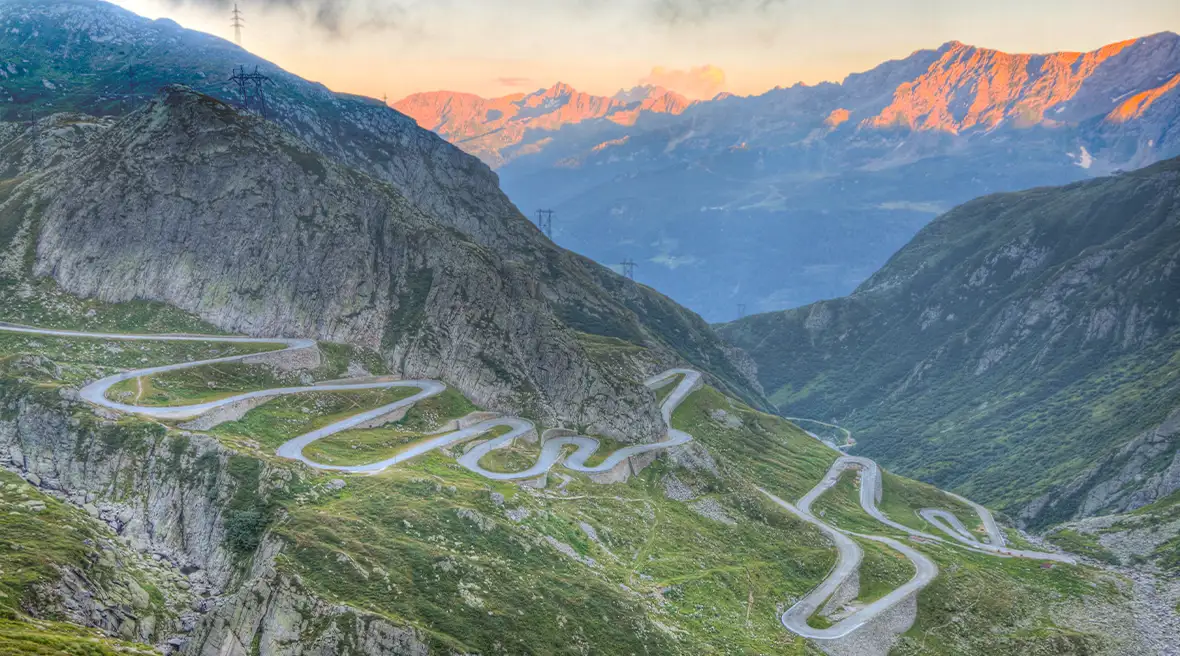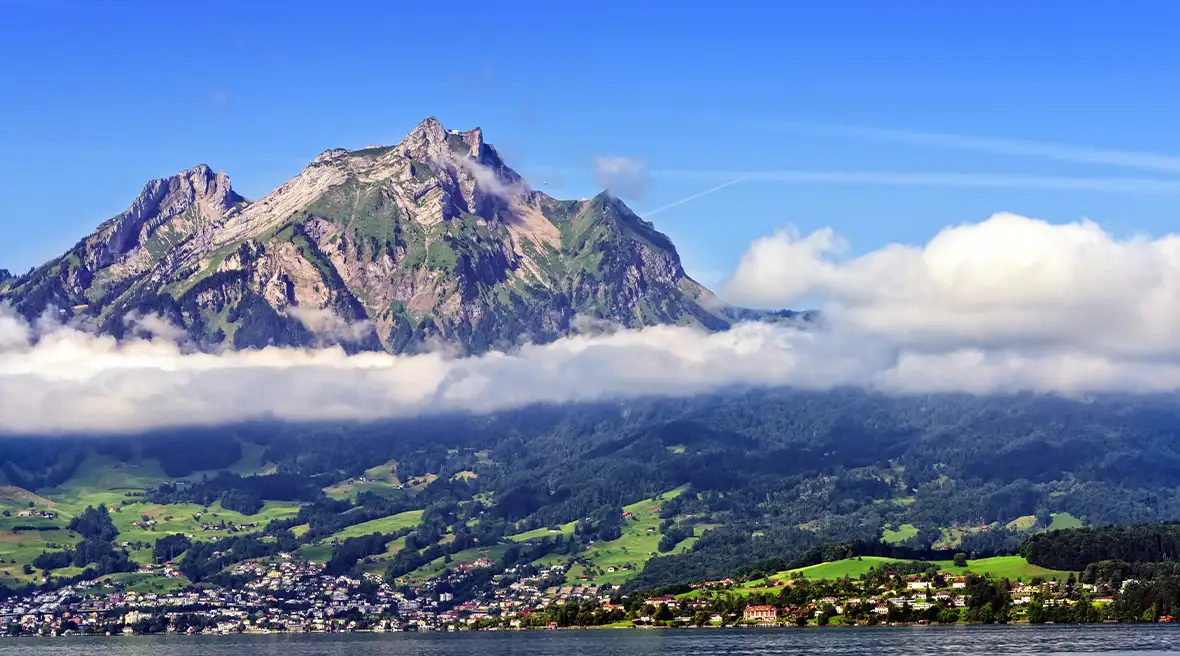Lucerne is true Swiss beauty

Lucerne or ‘Luzern’ to the local population, has all the ingredients of a gorgeous, quintessentially Swiss city.
The Heart of Switzerland
Renowned for being a particularly safe city, Lucerne is a diamond found in the heart of Switzerland. Its central location within Switzerland makes a perfect base for driving to the country's main attractions. The small city also has a lot of character, thanks to its spectacular scenery. Sitting at the edge of Lake Lucerne and surrounded by majestic mountain scenery, you’ll have no trouble remembering what country you’re in.
One particularly spectacular drive is through the Gotthard Pass (sometimes referred to as St. Gotthard Pass). Take the A2 south from the city centre and in an hour, you’ll find yourself cruising through the jaw-dropping mountain pass that traverses the Saint Gotthard Massif. The road is a vital link between northern and southern Switzerland and was made to fit the winding landscape. An insider’s tip is to try and hit the pass as the sun is setting (or rising if you’re an early bird), in order to witness as much of its beauty as possible.

A Tangible History
According to legend, an angel guided the city’s first settlers to a certain spot using a beam of light from the sky. They were then instructed to build a chapel in honour of St. Nicholas, the patron saint of fisherman and sailors. It then, appropriately, grew to become a small fishing town.
There is no single language used by Swiss people, in fact the population is comprised by a mix of German, French, Italian and Romanish speakers. Lucerne’s population speaks German for the most part (Almennic Swiss German Dialect, to be exact) so brushing up on your Deutsch is a good idea before hitting the road.
The city’s rich history is everywhere to be seen when strolling around and it reflects this multicultural sentiment. There’s architecture to behold from a variety of different periods and certain gems that cannot be missed.
The Kapellbrücke (which directly translates to ‘chapel bridge’) is a covered wooden footbridge that spans across the river Reuss. It was built in 1333, making it Europe’s oldest wooden covered bridge, as well as the oldest surviving ‘truss’ bridge. It contains a number of paintings dating back to the 17th century, some with fire damage caused in 1993 still visible.

The Bridge is a fine example of Lucerne’s well preserved medieval architecture, with other examples including the Old City Wall or Musegg Wall. The oldest section of the wall dates back to 1386 and it remains mostly intact to this day.
There are four towers along the wall that are open to the public; Schirmer, Zyt, Wacht and Männli. The oldest city clock was built by Hans Luter in 1535 and can be found in the Zyt tower. Because of its status, it’s set to chime every hour one minute prior to all the other clocks in the city, which allows the residents to hear the old bell distinctly.
There are numerous walking tours provided in the city that feature historical hot spots for the history buffs among you. But if history and architecture isn’t your thing then the city’s galleries are sure to strike a chord. The Rosengart Collection Lucerne has an impressive collection of pieces including the works of Pablo Picasso, Paul Klee and 23 other artists from the age of Classic Modernism and Impressionism.
Lastly, the Bourbaki Panorama Lucerne is a joy to behold for everyone. The museum is home to a unique cylindrical painting from 1881 by Edouard Castres depicting the Frano-Prussian war.
The Geography
Lucerne is surrounded by ample natural beauty in the form of tranquil lakes that have sustained the city, and mountains that have safeguarded it for generations. Although enjoying their spectacular beauty at a distance allows you to take it all in at once, some of you might like to get a little closer.
The fastest, easiest and most relaxing way to reach the 7,000ft summit of Mt. Pilatus is to take a ride on the world’s steepest cogwheel railway. Hop onboard the carriage and wind your way through various tunnels and alongside various cliff faces for 30 minutes as you climb to the top.

Lake Lucerne has a number of boat tours that utilise an impressive variety of vessels from historic paddle steamers to modern motor boats. Put your feet up as you look out over the endless blue.
Hiking/Skiing
The city’s surrounding mountains also offer the perfect opportunity to hike and ski your worries away. In the summer months when the snow is nowhere to be seen, tourist and locals alike dust off their walking boots and head to the hills! You can join a guided tour, head out as a family or on your own, there are plenty of tracks and routes to suit all abilities. See the official Lucerne site here to help you decide what walk would suit you best.

In the winter months the landscape is covered in a spectacular blanket of powdery white snow. There are no less than 24 snow sport resorts nearby, all accessible by car. When it comes to skiing, your kit is extremely important, so enabling yourself to pack as much as you can into your car is ideal.
There are trains and boats that run between resorts also, although we’re sure you’ll prefer to wind through the Swiss hills while enjoying comfort of your own car. The official Lucerne site has plenty of information on the region during the winter. Whatever time of year you visit, Lucerne is equipped with enough natural beauty and age-old culture to leave you feeling as though you’ve experienced somewhere unlike anywhere else.
So, if you’re feeling inspired to discover this stunning city for yourself, remember to book your tickets with us in advance to take advantage of the best fares.